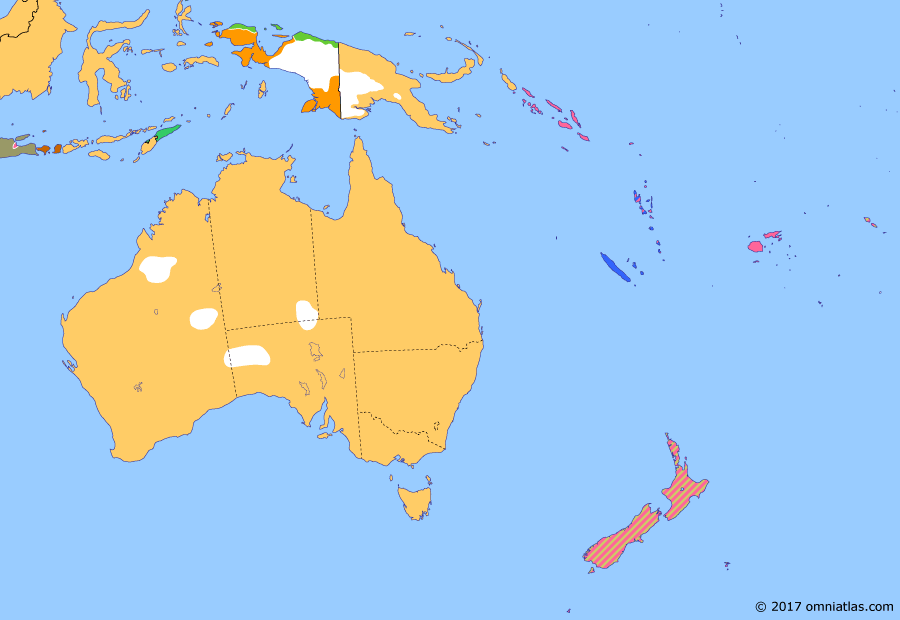Australasia 1946: Japanese Surrender
7 January 1946
7 Jan 1946
Decolonization of the Pacific
1788–1859 Australasian Colonies
1859–1901 Colonial Consolidation
1901–1941 Southern Dominions
1941–1945 War in the Pacific
1945–1987 Decolonization of the Pacific
1987–pres Modern Australasia
Japanese Surrender
Japan surrendered on August 15, 1945, ending the War in the Pacific. However it would take months for the Allies to accept the surrender of the 4 million Japanese troops still stationed abroad, with a few isolated soldiers even holding out into the 1970s.
